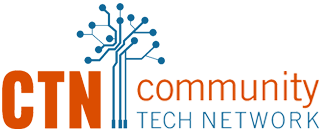I was excited to attend my very first Net Inclusion conference and honored to moderate the session on Digital Inclusion for People with Disabilities to discuss how digital inclusion is a necessity for all.
The panel consisted of two accessibility experts with different backgrounds.
Dr. Melissa Helquist: Melissa is the director of the Community Writing Center and associate professor of English at Salt Lake Community College. She has been teaching writing for the past 20 years in a variety of contexts: in writing centers, online, in the classroom, and from a canoe in the Northwoods. She is a disability studies scholar and an accessibility advocate.
Gary Knight: Gary is the executive director of the San Diego Futures Foundation and has over 25 years of executive management experience in the health care and nonprofit sectors. The last 5 years he has been dedicated to improving lives through technology at the San Diego Futures Foundation, where he first served on the board of directors for over 6 years before becoming the executive director.
Although small, we were a mighty group that was able to share our varying perspectives on the issue of digital inclusion related to people with disabilities. We discussed the importance of accommodating people with disabilities with the proper assistive technology tools and devices in order to give them the greatest opportunities and outcomes. We talked about how including accessibility in the onboarding process of new job training should be included in all environments so that everyone can be educated and prepared. We also talked about the existing standards and resources that have been created to help educate the public on accessibility. Resources like the W3C, who helped develop the most current WCAG standards.
Progress in accessibility has been made — just 10 years ago, the term wasn’t even acknowledged. However, we do have a long way to go. We often talk of accessibility in terms of adherence to standards. It is good to remember that accessibility is about inclusive design for real people with human needs.
Disability rights activist Judith Heumann says, “Disabled people are no different from any other group around the world. With appropriate opportunities and supports, we are able to contribute to the economic and social well-being of [our] communities.” She adds, “People can become disabled at any point of their life as a result of injuries from industry, landmines or rebel conflicts, or conditions such as HIV/AIDS, river blindness, or malnourishment.” Moreover, “poverty is a leading cause of disability. As a result, people with disabilities are disproportionately represented among the poor.”
As technology continues to advance, it’s important that we stay on top of the new tools and ways we can accommodate everyone — and ensure that we all have access to the same information.


Comments are closed.